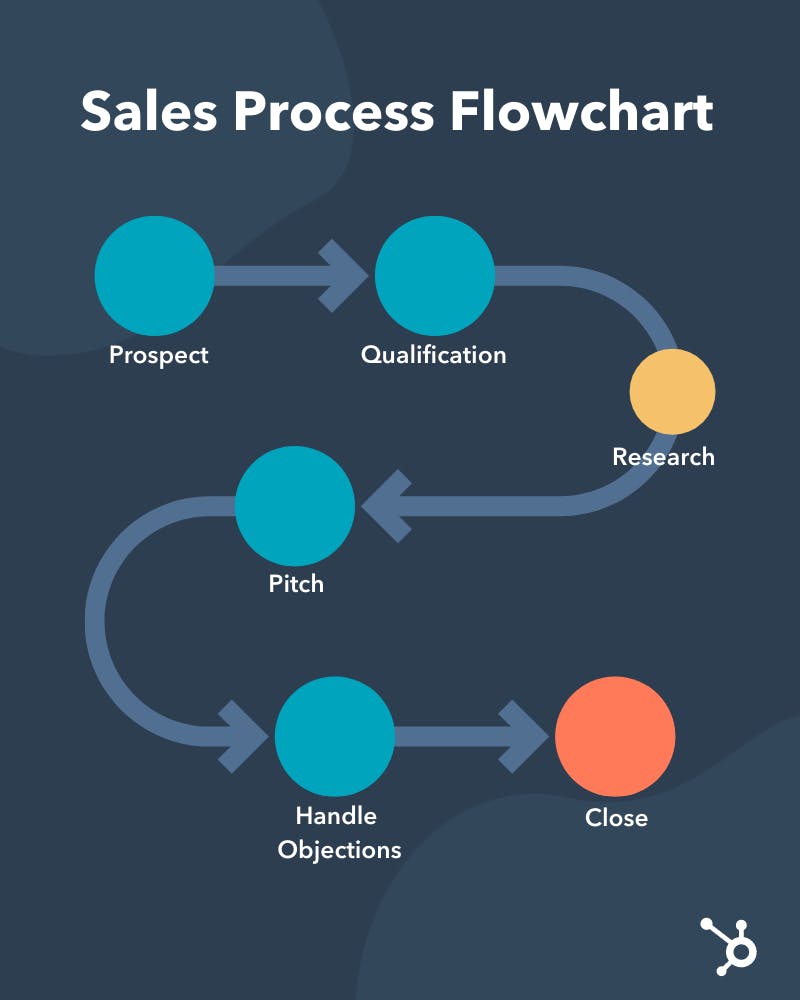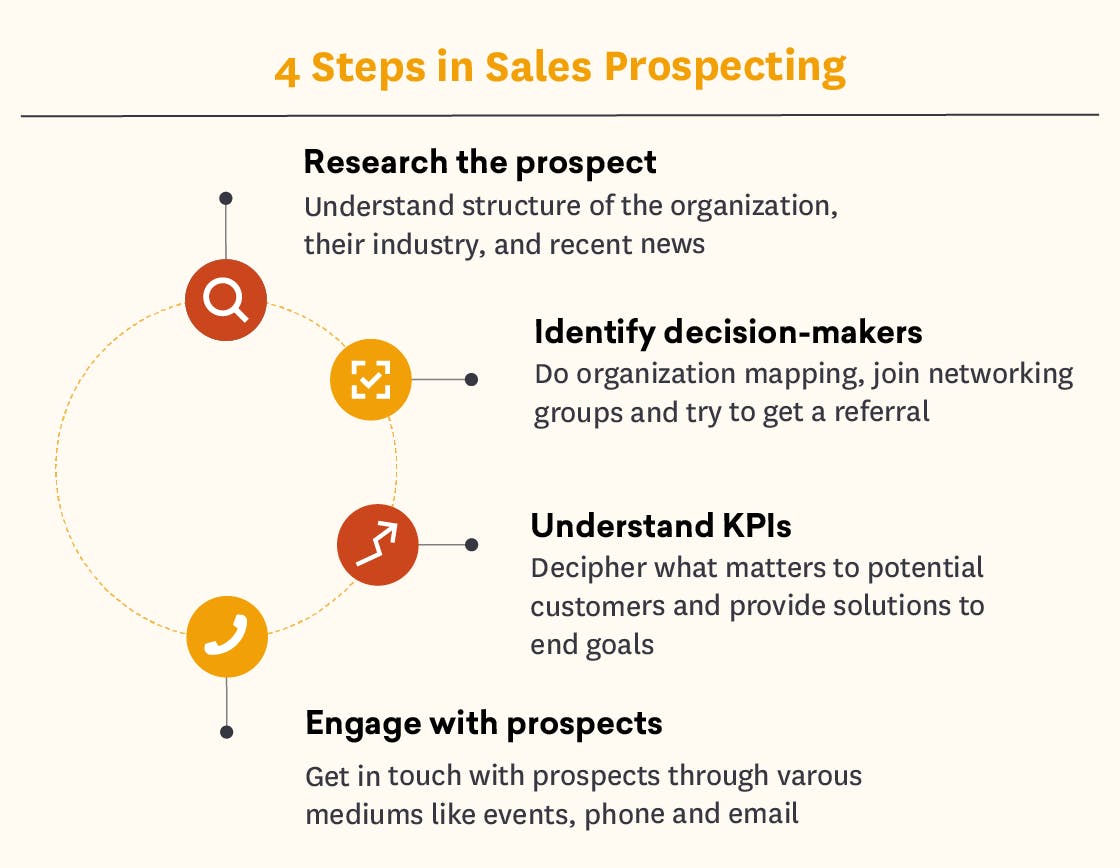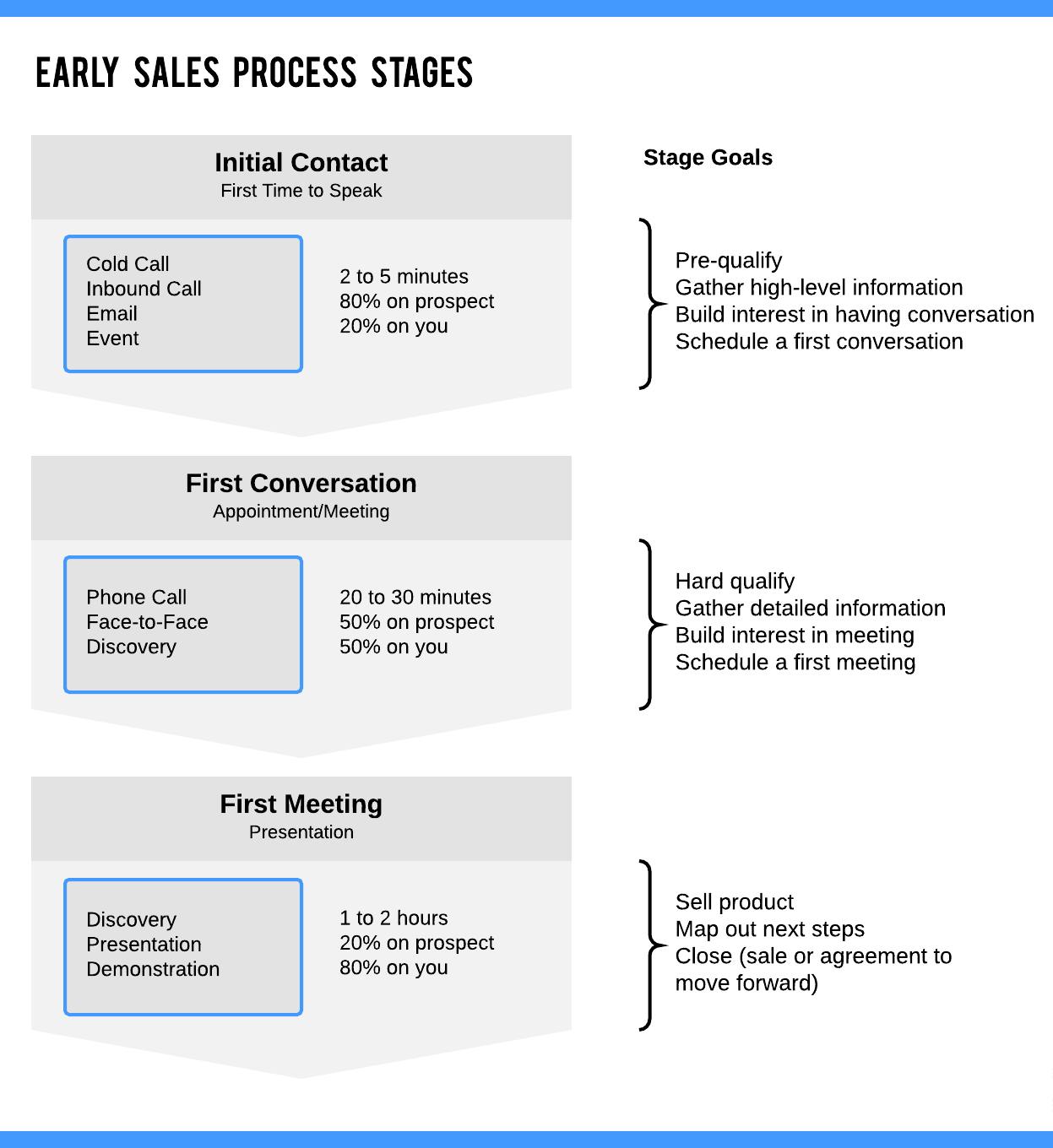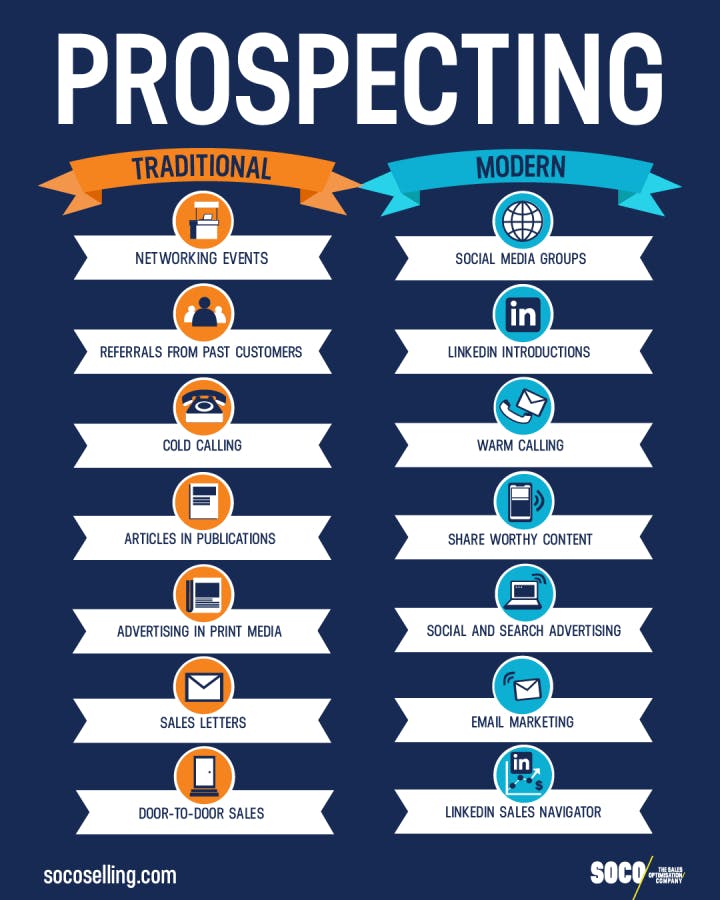What is sales prospecting: process, techniques, and tools
Feb 28th, 2023

You must have clients before your sales team can begin guiding them through your funnel. It would be pointless to contact random individuals. Therefore, before a prospect enters a sales funnel and is led toward making a purchase, businesses require a procedure for finding and qualifying potential customers. This procedure is called sales prospecting.
Prospecting directly affects the number of sales. Therefore, it is one of the most crucial elements of the sales strategy as it allows for increasing revenue and expanding your customer base. What is more, prospecting can provide you with a wealth of information regarding how to improve your sales strategy and where to focus your marketing efforts next. Let us discuss the process in more detail and describe its techniques and tools.
What is sales prospecting?
Sales prospecting is the procedure of identifying and contacting potential clients, also known as prospects, for your product. The goal is to involve them in a sales funnel until they are ready to purchase. During the process, sales representatives find and communicate with individuals who match the criteria of the ideal customers. Since these people are similar to the company’s existing clients, they are more likely to be interested in products or services offered by the business.
Sales representatives typically contact potential customers via social media, messages, emails, or phone and then decide whether to guide them through the sales funnel. The final objective of prospecting is to build a solid database of individuals interested in a company who meet particular criteria and turn them into clients.

Sales prospecting allows for filling the sales pipeline with leads to close deals and attract new clients. Sales representatives have developed efficient techniques to move through the funnel as the strategies advance further and conversations become more buyer-focused. With a streamlined sales prospecting process, you have higher chances to complete deals with your prospects. In addition, sales prospecting can help you establish stronger relationships with customers by providing the opportunity to understand their pain points and needs.
Now we will consider the process and discuss methods for conducting sales prospecting.
Sales prospecting process and techniques
In most companies, sales prospecting occurs at the very beginning of the sales process. However, each company can organize the process differently.
Step 1. Create the ideal customer profile
An ICP provides you with information on whether the people you are going to reach are likely to purchase your products or not. Thus, you should spend some time identifying your ideal customer’s characteristics and analyzing your existing customer database. Keep in mind that ICP should be a collaborative effort involving the management, sales, marketing, product, and customer support teams. Otherwise, you risk overlooking crucial information that could help you gain a competitive advantage.
You can start by identifying your target customers, taking into account location, company size, and budget. Then create ideal customer profiles for the following categories: five top and five worst customers, highest-paying clients, and least profitable ones. Consider the other characteristics: most active customers, successful upsells or extended contracts, highest selling price, and longest time with your company. You can update the profile once you collect additional information about your prospect.
It is also essential to define the potential problems your target clients might be experiencing and explain how your product addresses them. Connect with your current clients and gather feedback on how they view your business, the issues they are addressing, and what will keep them coming back. Ask more about what makes you such a good fit for them and why they would suggest you to others.
Step 2. Prioritize the right prospects
If you want to save time and increase your deal potential, you need to prioritize the prospects taking into account the likelihood of converting each into a paying customer. Sales teams can forecast a prospect's willingness to buy using lead scoring, which is based on a combination of data and predetermined activities or behaviors. Lead scoring is a method for ranking prospects according to a scale that reflects the perceived worth of each potential customer to the company. As a result, it would be easier for your sales team to get in touch with the leads with the most potential.
Prospects are typically qualified according to specific dimensions, which means that some criteria, such as deal size or timing, are prioritized above others when identifying potential leads. So, when determining whether a lead is a potential customer, you can use the method that implies percentages and scores. The "percentages" component refers to the relative importance of certain characteristics. For example, if the sales team places a high priority on deal size, that quality might account for 70% of what defines an ideal prospect. On the other hand, the timing might account for 10% as it is a relevant but less crucial factor.
After assigning a percentage to each characteristic of the potential customer, you can give a score for each likely prospect. Consequently, you would rate each factor on a scale of 1 to 100 according to how closely a lead matches your ideal representation of that characteristic. For example, a lead would receive a score of 100 for their deal size if it was perfect. If the fit was completely terrible, you would give them a score of 1.
Then you need to multiply the score you gave each lead for each quality by the percentage you assigned to each characteristic. Therefore, if you gave a quality a percentage score of 70% and a lead's potential deal size was 50, the result would be an increase of 35 in the lead's score. Finally, the prospect will receive a total score that was calculated by adding the results of each quality's score and percentage. You can take a look at our separate article to learn how you can grow the number of online leads your business receives.

Step 3. Make a list
Now you can compile a list and score each potential customer according to their viability, allowing you to increase the effectiveness of your prospecting efforts. Your list should include prospects’ contact information and data collected through different platforms and channels. In addition, you can segment your list for greater convenience. As a result, when you are ready to connect, you can send a personalized message to a potential client.
Use a CRM to keep track of your contact information and notes on each prospect. It will ensure everything is structured and consistent, and you get all crucial prospect details. Plus, keep thorough sales notes about each person, including their behavior or interests, so you can make a good impression once you reach out to a potential customer.
Step 4. Identify communication channels
Standard cold calling or email marketing can seem outdated if your goal is to outperform competitors. In contrast, use an omnichannel communication strategy to interact with prospects depending on their interests. Identify the platforms where your prospects spend most of their time and the ways to draw potential customers’ attention.
Plan out the steps you'll take to contact prospects. Start by creating a detailed communication plan. Consider events like a lack of reaction, a lack of interest in the product, or other problems you may encounter during the SaaS sales process and include them in the plan.
Establish a presence on social media prior to using it as a communication tool. Start a conversation, contribute ideas and information, and demonstrate your skills. An active and detailed profile will seem more reliable to your prospects.
Step 5. Prepare a unique pitch for every potential customer
To arouse prospects’ interest in your product, you need to create effective and personalized sales pitches. Thus, you need to gather information about your prospects related to their interests, preferences, and needs. There are several ways to accomplish this task. Firstly, you can examine the prospect’s blog to learn more about their interests from the posts. Secondly, you can find and explore their social media profiles. Check their new publications and recent updates. And thirdly, you can read the “About Us” section of the company website.
Conduct research concerning the other characteristics that include what the prospect’s company does, how it's doing, the state of its industry, where it stands in the context of its competitors, and the typical problems businesses in a similar industry deal with.
Once you have collected all the necessary information, you need to identify a reason to connect. It may be mutual connections, trigger events, or your website visits. If prospects viewed your website, analyze the keywords that led them to the site and the pages they looked at. Next, create a decision map to illustrate the prospect’s opinions and objectives. With their major goals in mind, you can tailor a pitch and more effectively address any concerns.

Step 6. Start a conversation
You have outlined the strategy and are now ready to start the conversation. Avoid using a generic sales pitch in your communication. Instead, use the list segments and notes you made to send each person a personalized message. Your outreach should be tailored to your customer’s needs, goals, their company, industry, and personal preferences, whether you call or email them. According to statistics, segmented campaigns generate 760% more revenue compared to a generic approach.
When contacting a prospect, keep in mind the following tips. First, mention a particular issue the potential customer faces and provide a specific solution. Stay timely and ensure that the problem a prospect is trying to solve is still relevant. Add the human touch. Include meaningful details like wishing someone a lovely holiday weekend or praising their company's outstanding product. Help instead of selling. Instead of setting up a follow-up meeting, you may offer to evaluate their online presence and report to them with your findings in a week.
Always keep in mind that a conversation should be casual and informal. Avoid sounding too pushy. The key to a successful prospecting process is to analyze whether a relationship benefits both parties instead of trying to sell.
Step 7. Review the results and consider what you can improve
Prospecting is a dynamic process. Therefore, you should consistently track the results, learn from your findings and improve the procedure. Examine the previous answers from your prospects before each outreach. Note the sales pitches each prospect responded to, messages that received a high response rate, and strategies that failed to engage them.
After each interaction with a potential customer, evaluate how successfully you recognized difficulties, helped set clear goals, confirmed budget availability, and determined the likelihood of success. This analysis will help you refine the sales process later.
Instead of waiting until you've completed your strategy to make changes, you should monitor your outreach results as you speak with prospects. Analyze customer reviews regularly, and have a backup plan if something doesn't go as intended. Keep a record of previous conversations in your CRM, including the open, click-through, and reply rates. You may send more effective messages by leveraging techniques and campaigns that have previously been successful for that prospect by adding this information to contact profiles.
Every company’s sales strategy is unique. However, these seven steps will help you establish a basis for your approach while also allowing you to be flexible enough to take into account changing requirements or ideas.

Sales processing tools
Now we will describe the best tools used in sales prospecting and related processes and describe their key features to help you determine which will be most valuable.
LinkedIn Sales Navigator
LinkedIn has 875 million users worldwide, which is a significant client base. Moreover, nearly 16 million of these individuals also occupy executive or senior management roles inside their companies.
With LinkedIn Sales Navigator, you can easily interact with your prospects on the social network. The key features include advanced search techniques that take into account the criteria like job titles and company size, the opportunity to develop and manage a personalized prospect list, and personalized LinkedIn mail outreach to prospects. In addition, you can make notes and receive notifications about critical updates, such as prospects’ job changes.
Usergems
Usergems is a sales prospecting tool that offers the following features: contract tracking and account tracking. Account tracking allows you to monitor employment changes in relevant companies. In addition, you can access verified contact information and identify previous touch points with the company.
Contact tracking focuses on changes in employment for potential customers, leads, and past clients. As a result, every time a previous lead or client joins a new company, you have the chance to introduce yourself and your product or service to the new organization. Besides that, Usergems not only notifies you if a previous lead or prospect quits their company but also adds them as new contact in your CRM with their new information.
Leadfeeder
Users who visit your website have already expressed an interest in your products or services in some way. Therefore, they are more likely to respond to outreach efforts and convert. With Leadfeeder, you can find prospects who are ready to make a purchase.
This lead generation tool helps you identify and track website visits. Leadfeeder allows you to determine the companies that visit your website, track users’ behavior, score and qualify prospects according to website activity and demographic criteria and set up email notifications for specific events. Additionally, Leadfeeder offers a filterable contact list that enables you to get in touch with and interact with targeted prospects.
HG Insights
This platform tracks the internet infrastructure of over 9 million businesses and uses this information to provide useful insights for sales teams. With HG Insights, you can monitor and analyze your market and identify opportunities in underserved markets. You can also identify prospects who are most likely to purchase your product. The tool helps leverage data for evaluating, ranking, and prioritizing potential clients.
Demandbase
This application gathers first-party data from your sources, such as your website and CRM, matches it with data from third-party sources, and then analyzes the results to derive insights. Besides, Demandbase provides various options to qualify, filter, and evaluate prospects using intent data. For example, you may base your score on the content they watched or the amount of time they spent on your website.
In addition, the application provides access to company data, such as location and revenue, contact information that includes email, phone numbers, and LinkedIn for nearly 113 million contacts in decision-making roles, and details on buying intent based on a prospect’s search history.
Close
It is a CRM designed for small-business sales teams. Without using any add-ons, Close enables you to manage and automate nearly every part of your prospect outreach and engagement. For instance, the CRM allows for automating cold calls and sending and receiving emails from the CRM by synchronizing your current email provider.
With Close, you can also create unique, individualized, and automated email sequences. Along with these features, Close provides extra capabilities tailored especially for sales managers, such as reporting and call coaching.
Reply.io
Reply is a tool for engagement and sales automation. Because of its sophisticated email features, this solution is excellent for automated cold email outreach. Reply’s key characteristics include a Chrome add-on for automating and integrating LinkedIn and the ability to interact with your prospects through several marketing channels, both during the first outreach and the follow-up. The other AI-powered feature includes recommending actions based on your prospect’s activity. For example, you can delay future communication and call the lead only when they are actively interested.
When it comes to prospecting, no method fits all situations. You could discover that some sales prospecting techniques are more effective for you than others, depending on the size and type of your company as well as the preferences of your target market. The key to success is to continue experimenting, and you will definitely reach the desired result.
